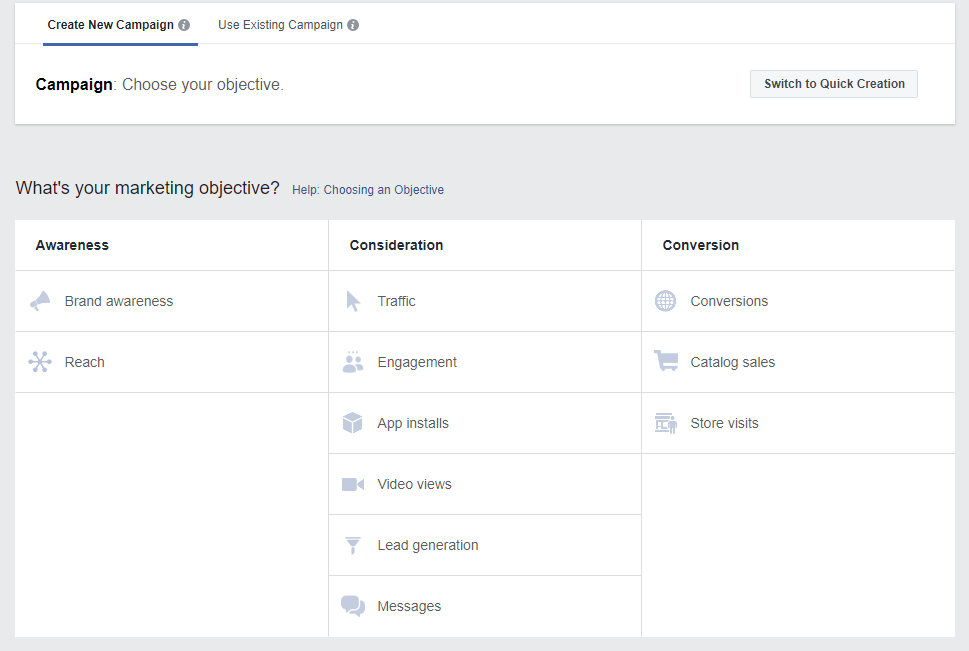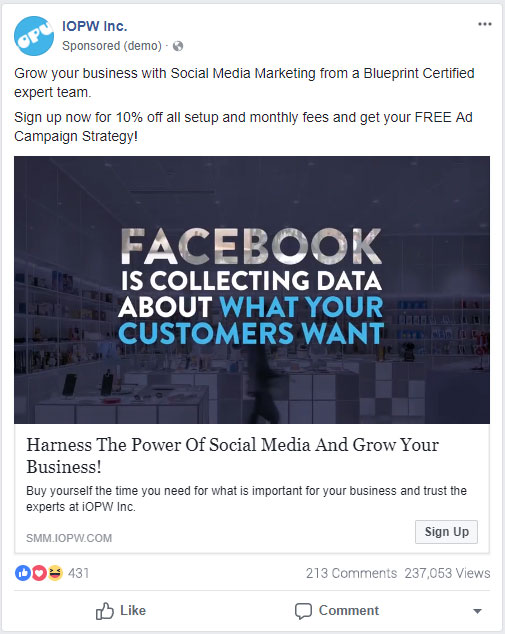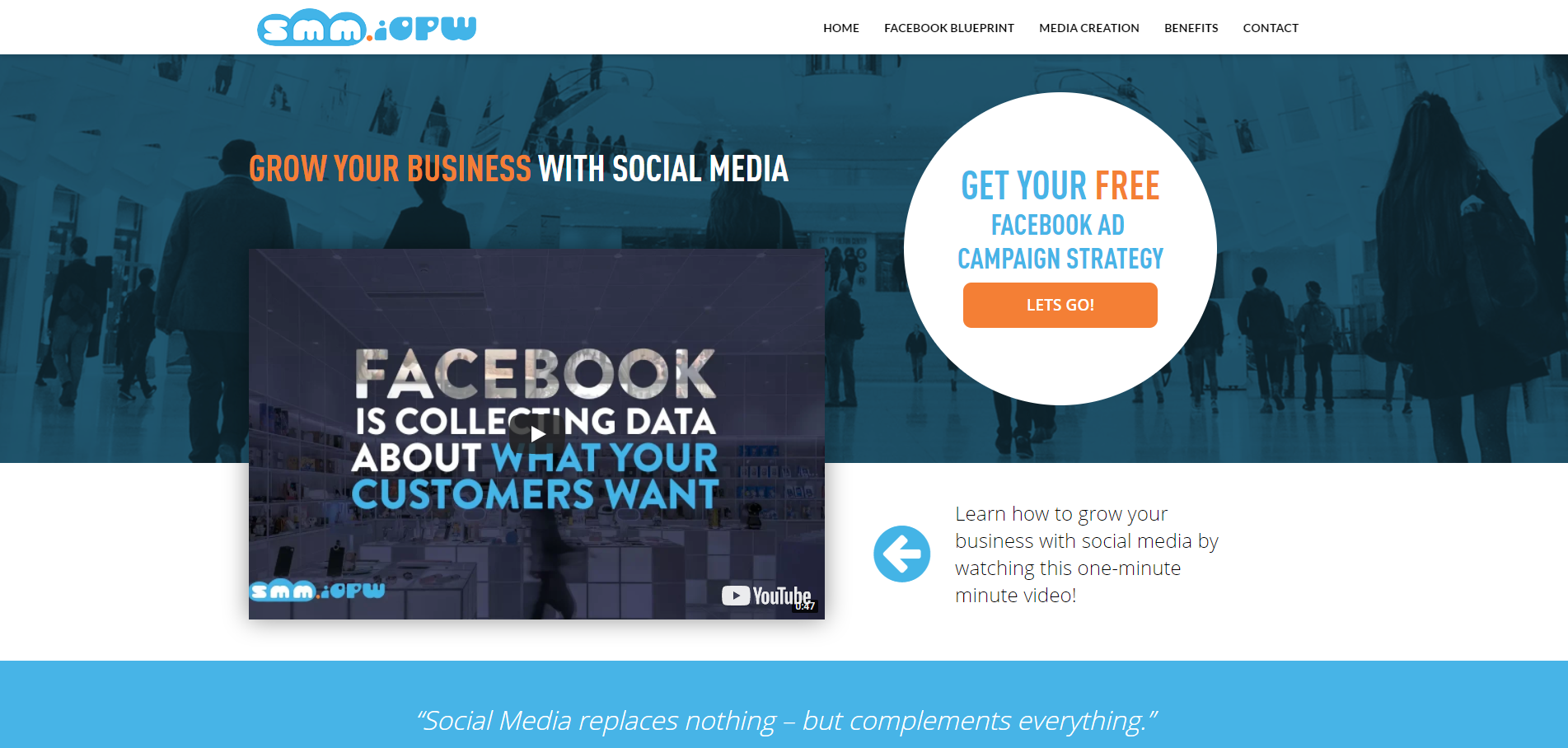Ads on Facebook have begun to dominate the advertising landscape as they rise in popularity every single day. Businesses around the world, large and small, have begun to take notice and shift a much larger portion of their marketing budget into Facebook Ads.
At first glance, the user interface does appear to be extremely user-friendly and quite easy to navigate. As well, they allow you complete control over the setup, from targeting to ad creative and everything in between.
But with so much control, there is much more space left for user error which can lead to inflated prices and underperforming ads.
With so many possible pitfalls, we wanted to help you avoid them and pass along some tips to make your ad as successful as possible.
Through our research, we narrowed down the most common mistakes (and there are a lot!) and found they all generally fell under five different categories: ad setup mistakes, targeting mistakes, ad creative mistakes, user-experience mistakes and post-launch mistakes.
So, let’s take a deeper look!
Ad Setup Mistakes
You may be asking yourself: “Isn’t everything related to ad setup in this article?” Well, you are not wrong. But what we are referring to here are aspects like the objective, ad format type, placement choice and bid set up.
These will not as obviously affect the performance as your targeting will, but they will no doubt have an effect on the impact of your ad and you should be putting some thought into these choices.
Your objective should be the first thing you decide upon. What do you want to get from this ad campaign? Are you simply looking to make sales? Are you wanting to gather leads for future business? Or are you just looking to get some engagement on social media to drive up awareness of your brand?

When it comes to placement, there is no right or wrong choice. It really comes down to where you think your demographic will find the ads to be least disruptive and most likely to act on, instead of getting annoyed by them and closing them out; thus contributing to your negative feedback metric (which can result in delivery penalties from Facebook). Options range from the standard Facebook Newsfeed Placement to the Right Column Placement, to the Audience Network Placement and many more. So take the time to look into each of these placement types and decide what is best for your ad.
As with placement, when it comes to the ad format type, you really just need to sit down and assess what media you have at your disposal, where it would be best appropriated, and what your audience is most likely to react to in a meaningful way. Take some time to check out all the different ad types and make your choice.
Other potential tools to use to your advantages, like automated rules and the bidding system, are quite complicated topics, and something we will cover more in-depth another day. You can read into them on Facebooks Help Centre and it is highly recommended that you educate yourself on them before moving ahead with ad campaigns that include higher-range budgets.
Targeting Mistakes
As anybody who has been involved in marketing or advertising will know, getting your ad in front of the right audience is key to any ad campaign. Facebooks targeting system incorporates traits ranging from geographical, to interests, to job titles, to online behaviors, and so much more.
With this added control comes many more opportunities to make a mistake that could lead to your ad underperforming and cause vital metrics like Cost-Per-Click or Cost-Per-Conversion to soar.

On the Facebook platform, users have the ability to mark which ads they found to be relevant to them. If your ad is being served to an audience that is not enjoying it, the users will make sure Facebook knows that and your feedback scores will deteriorate, causing Facebook to slow down the delivery of your ad.
Beyond the common mistake of picking the wrong demographic, which can be avoided through pre-emptive market research, there are other less common mistakes.
Selecting too broad of an audience can hamper the effect your Ad has, and by identifying a more defined audience, you can be more certain that the traits you are seeking in customers will be matched when your ad is delivered. A good rule of thumb is to keep your audience no more than 10 times the size of the estimated total reach Facebook calculates for you. So if Facebook estimates your total reach will be 50,000, your total audience should be no more than 500,000.
Some other targeting tips to try to follow are assessing what time of day you think your target audience is likely to be engaged on Facebook and setting your ad to run exclusively during those times, excluding past and current customers for certain marketing efforts, and using custom & lookalike audiences. Those audience types are a whole topic in and of themselves and we will tackle that another day.
Ad Creative Mistakes
This may be the second most important aspect to pay attention to; barely lagging behind targeting options.
If your ad does not grab people’s attention, it will not be successful. This is where you can set your creative genius loose!

Your text copy should be short and to the point, but most importantly, it should match the tone that your audience will respond to and that tone needs to be consistent. Without a clear and consistent message, your ad will be dead in the water.
Just like the text, your picture needs to grab people’s attention! And it is not always the photo you will expect that will have the best impact. Testing out multiple variations of your creative (whether that is the media or text) through Facebooks A/B testing capabilities, is the only surefire way to know that you are using your best possible creative; therefore grabbing as many people’s attention as possible.
A very common pitfall, and one not many people are aware of, is putting text into your image. Facebook allows for a 20% text usage, but even if you are below that, certain percentages will still be penalized in delivery. So take advantage of Facebooks Text Overlay Tool and if you believe you are under 20% but are still being disapproved, you can always send in an appeal to the policy team.
The best practice is to attempt to have no text in your image, but if you must, keep it as minimal as possible.
User Experience Mistakes
If you are practicing SEO on your website, you have likely heard of the increased importance that Google and other search engines have put on User Experience (UX). And this applies to Facebook as well.
Making sure you are offering up something of value, also known as a Unique Value Proposition (UVP), can be make-or-break when it comes to your audience engaging. While you will not be directly penalized by Facebook for not offering up value, you will see the consequences of this in the engagement-related results and in your final ROI.
Something else to keep in mind is having a well-designed and relevant landing page (if your website needs editing, you will want to do so before doing any advertising on Facebook!).

If your customers are clicking on a page that seems to have no relation to what they thought they were going to find, they will leave promptly and maybe even report your ad.
Post-Launch Mistakes
So you have picked the right creative, figured out your audience, and launched your ad. All done, right?
Far from it!
There are so many things you should be doing during the life of your ad to ensure its optimal success.
The first mistake you could make is being impatient. Facebook Ads have a 24-hour optimization period that allows the system to assess how the ad is being received and then adjust to give you the best results possible. So if you need to make any edits to an already created ad, try to do those right away as every time you edit your ad, it will need to go back through this optimization period.
Once your ad is clear of its optimization stage, you will want to make sure you are regularly monitoring it. Decide what metrics are most important to you (the most vital metric tends to be Cost-Per-Result) and track those like a hawk. If you notice a decline in performance, you may want to make some adjustments to your targeting. Using the Audience Insights tool to determine which section of your audience are best receiving your ad can be an invaluable tool when deciding how to adjust to your results.

Other metrics to keep an eye are the Positive Feedback, Negative Feedback and Relevance Score; all of which you can follow in your Ads Manager after your ad gets 500 impressions. This is an indicator of how well your ad is being received and whether those being served your ad are finding it to be relevant to them or not.
And if you are noticing a plateau in your ads performance, take a look at the Frequency metric. This indicates how often each person who has been served your ad has seen it. If that number rises beyond a point that you are comfortable with, it may be time to make some adjustments, or in more extreme cases, shut the ad off and start a new one with a fresh creative.
Conclusion
If you take one thing from reading this, it should be this: “With great power comes great responsibility.”
Yes, this was first uttered by Uncle Ben to a young Peter Parker, but it is just as relevant to this situation as that of the web-slinging hero.
Facebook Ads offer you massive amounts of freedom and control, especially with their targeting system.
Much more control than other advertising platforms.
But with that added freedom and control comes many more opportunities for missteps. And if you do not know how to avoid those pitfalls, you could find yourself paying much more for your ads than you need to and not seeing the results you should be seeing.
So take some time to explore all the capabilities before launching your ads to prevent wasted money and wasted opportunities. You will be glad you did!
If you simply do not have the time to run your own ads, or the time to learn how, trust the Facebook Blueprint certified experts at SMM.iOPW and start growing your business today!